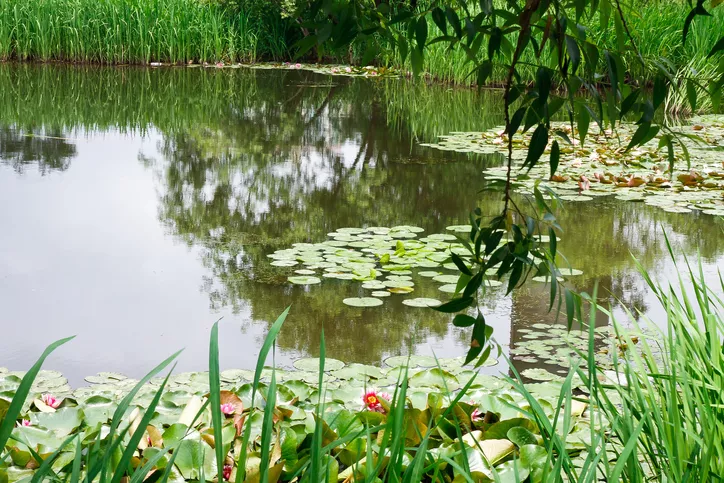- Plant reeds in the pond
- Caring for reeds in the pond
- Hibernating reeds in the pond
- Reed as a purification plant
Reed is a pretty, densely growing pond plant that can also adorn your home garden pond. However, you should consider a few basic things when planting and caring for them. We explain what they are.
 Reeds have a cleansing effect on the pond
Reeds have a cleansing effect on the pond
Plant reeds in the pond
Reed grows extremely strong. It is therefore advisable to provide it with a rhizome barrier.
You can put reeds in the water with a lattice basket, for example, and thus prevent it from spreading. If the reeds are planted in soil, e.g. on the bank, a root barrier should be used.
Otherwise you run the risk of the reeds spreading over the entire pond and you will have to laboriously remove them.
Caring for reeds in the pond
Reeds are quite frugal and when they have their feet in the water you hardly need to pay them any attention. The nutrients in the pond should be sufficient so that you can do without fertilizing.
Taking care of reeds is only a bit time-consuming once a year: In the spring after the winter break, they have to be cut back.
It is important that the reeds do not sprout at the time of pruning. Cut back the stalks to just above the water surface so that the freshly green reeds can sprout again.
Hibernating reeds in the pond
Basically, reeds are hardy, and this also applies to reeds in the garden pond. However, you should take a few precautions to protect the reeds from frost and moisture damage. Before the reeds go into hibernation, tie the stalks together at the top; this protects the plant from moisture and cold. In addition, you must not reach for the scissors before winter! The pruning happens only after the winter.
If you live in a very cold area, where temperatures drop below -20 degrees and/or your garden pond is quite small so that it freezes completely, it may be advisable to take the reeds out of the pond and put them in a bucket in the basement or some other cool place to hibernate.
Reed as a purification plant
Reed not only looks pretty, it also has a strong cleaning effect: it produces 5 to 12 grams of oxygen per square meter per day and thus supplies the pond with sufficient oxygen, which reduces bacteria and creates a healthy ambience for flora and fauna.